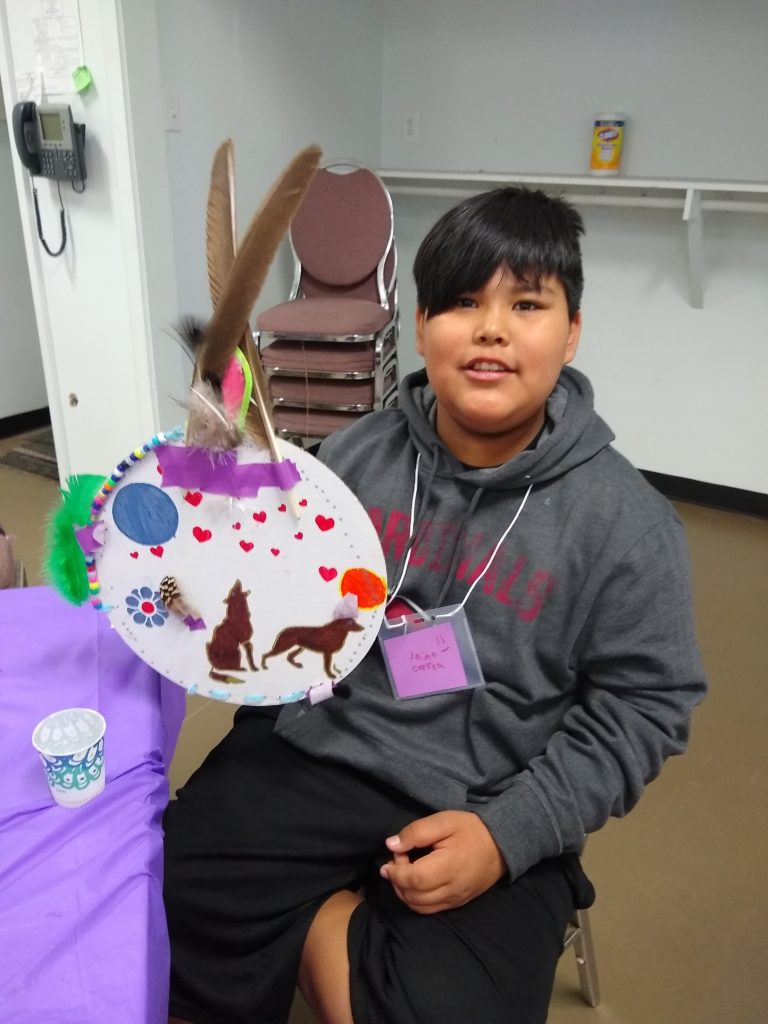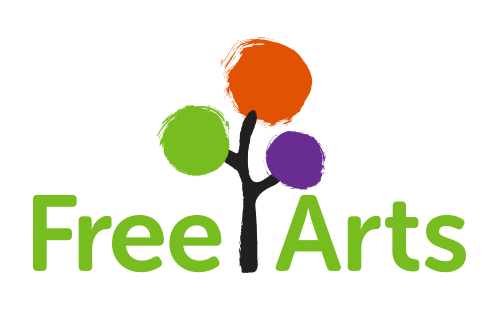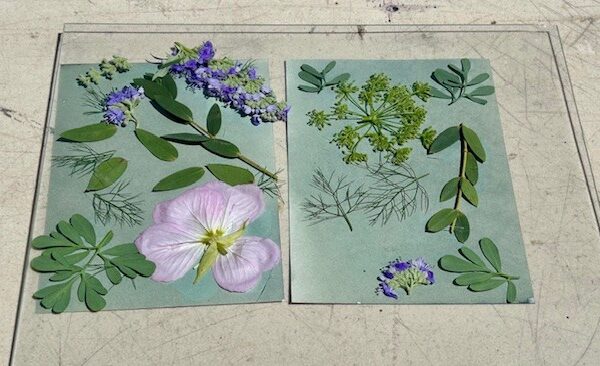- Set expectations: Many children (and people in general) have “creativity scars” and need to practice silencing the part of their brains that want to be “perfect” in their art making. Creating expectations upfront that include things like “be brave”, “encourage others” and, Free Arts’ favorite, “there are no mistakes in art” help children feel safe to create.
- Get to know each other: When working with a group, take time before art making to ensure that everyone that everyone has a chance to introduce themselves to the group. Create nametags or play a simple game. Knowing who everyone is in the space helps children feel safe to create and share.
- Ease into it: Starting off with a simple introductory activity helps create a sense of safety and gets children into a creative frame of mind. Simple games like creating a doodle and passing to a neighbor to expand on or drawing to music take no more than 5 minutes and help warm up creative thinking skills.
- Limit materials at first: When first beginning to explore art materials it is easy to get overwhelmed. Limiting materials and encouraging creativity within those limits can help children feel more confident and comfortable. Great projects for the first time you make are together include paper or cardstock, colored pencils or markers, precut magazine images and glue. As you proceed in your artmaking with children and notice that they feel comfortable other materials like paint, clay and found objects can be introduced..
- Choose projects that promote self-expression: Projects that have an expected outcome can limit creativity and be frustrating for children if their creations don’t turn out to look exactly like the example. Also, giving children artistic prompts that invite them to look at and understand themselves and their experiences helps children process and explore their own identities. Examples include creating a power shield (piece of cardboard with a handle) designed with your 4 main superpowers, decorating a cigar box with the qualities and traits that you show the world on the outside and the ones you keep hidden on the inside.
- Create art with children: Creating art with children gives adults the opportunity to model expectations like “be brave” and “there’s no mistakes in art”. It also creates a space where adults and children can share in a lateral rather than a hierarchical way. Lastly, great conversation or meaningful moments of silence come from sitting and creation art together.
- Mix up the mediums: Visual art isn’t the only form of self-expression! Try incorporating music into your group y playing a rhythm game and drumming with hand or pencils on the table or turn on some music and warm up with a game of freeze dance. Or even explore writing by utilizing a poetry template like these.
- Ask encouraging questions: Toward the end of your artmaking time is a great time for talking with children about their creations and process. Rather than commenting on their artwork with praise-based statements like, “That’s the most beautiful ocean I’ve ever seen!” try asking questions about their process, “How did you come up with that idea?”, “Why did you choose those colors?” “What is it about those images that you like?” and “What was your process?” help children reflect on HOW they created and encourage creativity over perfection.
- Provide the opportunity to share: At the end of your session give children the option to share their work with you or the group. If you’re working with several children you can do this in a variety of ways including laying work out on the table and having a silent gallery or inviting children to trade work with a friend and provide one encouraging comment. The important thing is
Child from Free Arts Leadership Camp with his power shield.
that children always have the choice not to share. - Provide closure: Proving the opportunity for children to say goodbye and reflect their experience making art is an important part of their processing. Build in a few minutes for children to share the thing they liked the best about making art or an idea for something they’d like to do next time. Be sure to share with them when they can expect to make art again. Close with a simple ritual like a high five or putting all hands in the middle and yelling “Art Heals!” or a phrase of your own!

Other tips and tricks:
- Safety: If you or your program work with children that are living in a treatment facility or have a known history or self-harm please be aware of the materials you are using. Staff or counselors working closely with children will know if there are items that children should not be working with. Partner with these people before choosing materials.
- Supplies: Don’t know where to get supplies? Many cities have resource centers for teachers or artists that warehouse lightly used supplies that can be purchased inexpensively or are available for free.
- Emotions: Art making can often bring up memories or emotions in children. Allow children to talk through anything that comes up and, if possible, be sure to inform caregivers about the child’s reactions so they can follow up with them later. If anything related to abuse or mistreatment of children is revealed during artmaking follow the appropriate steps to report this information.




